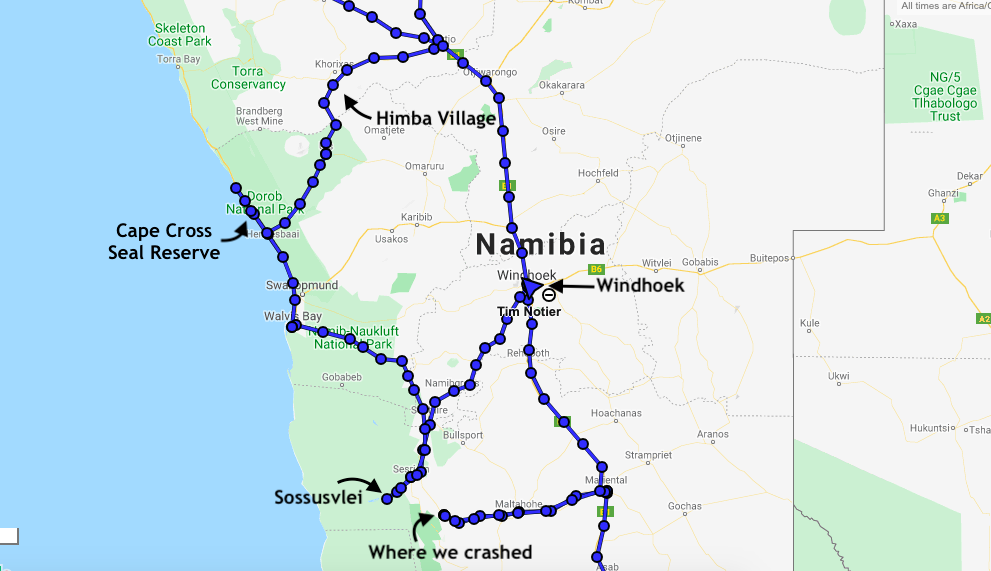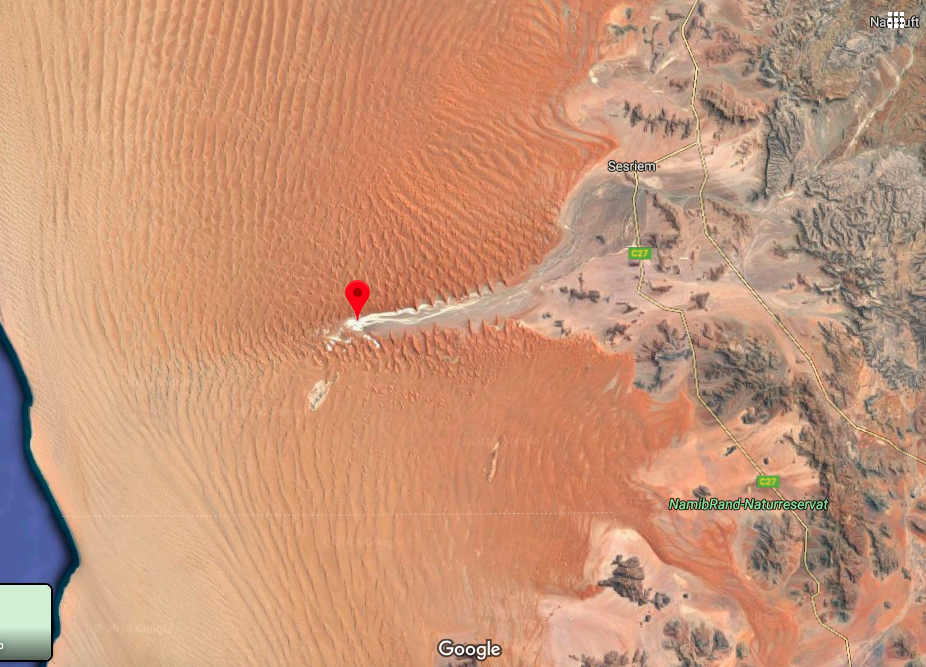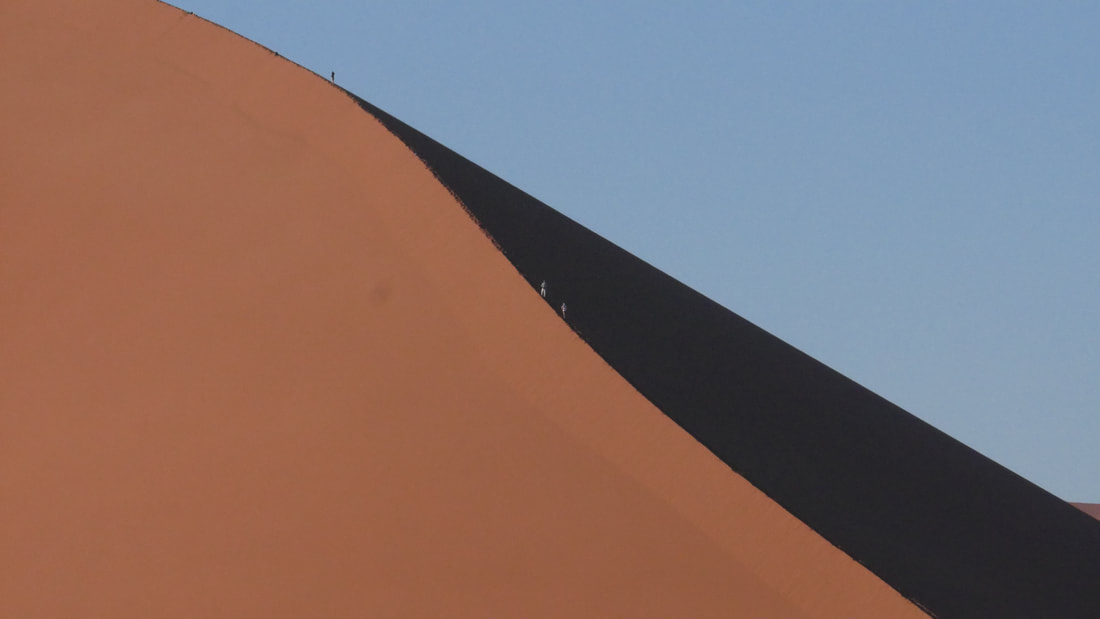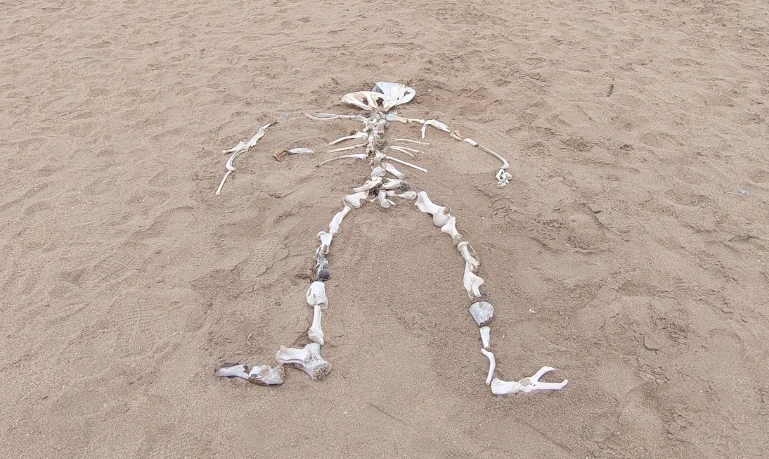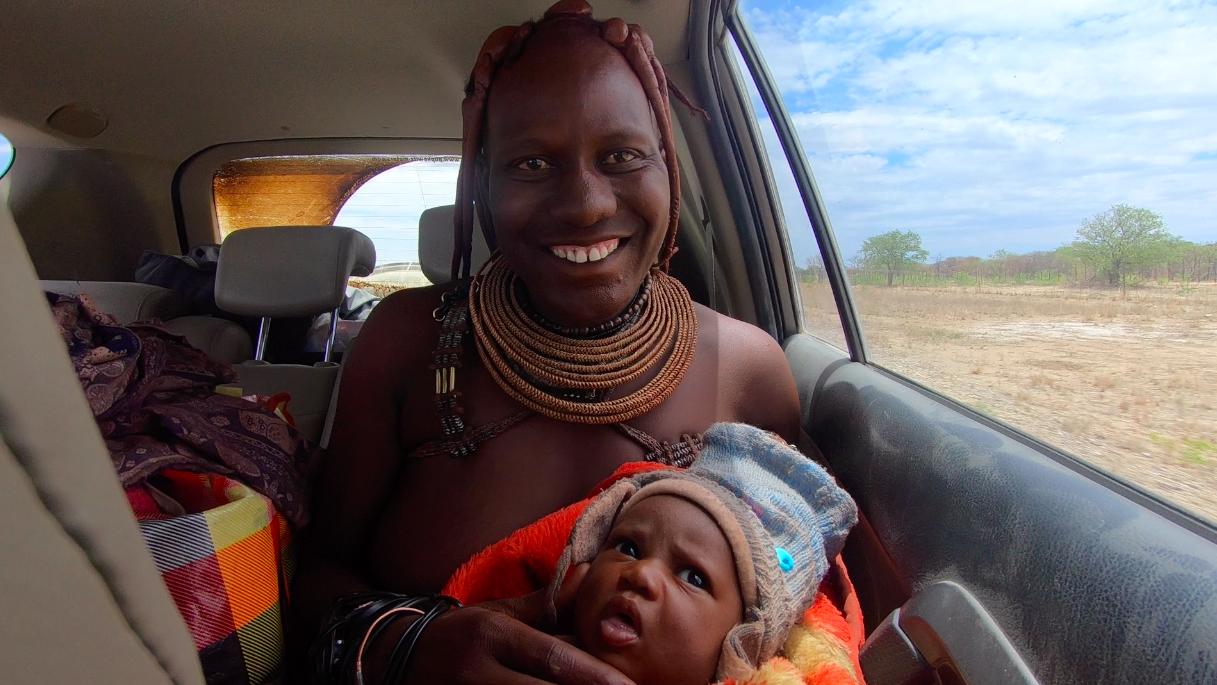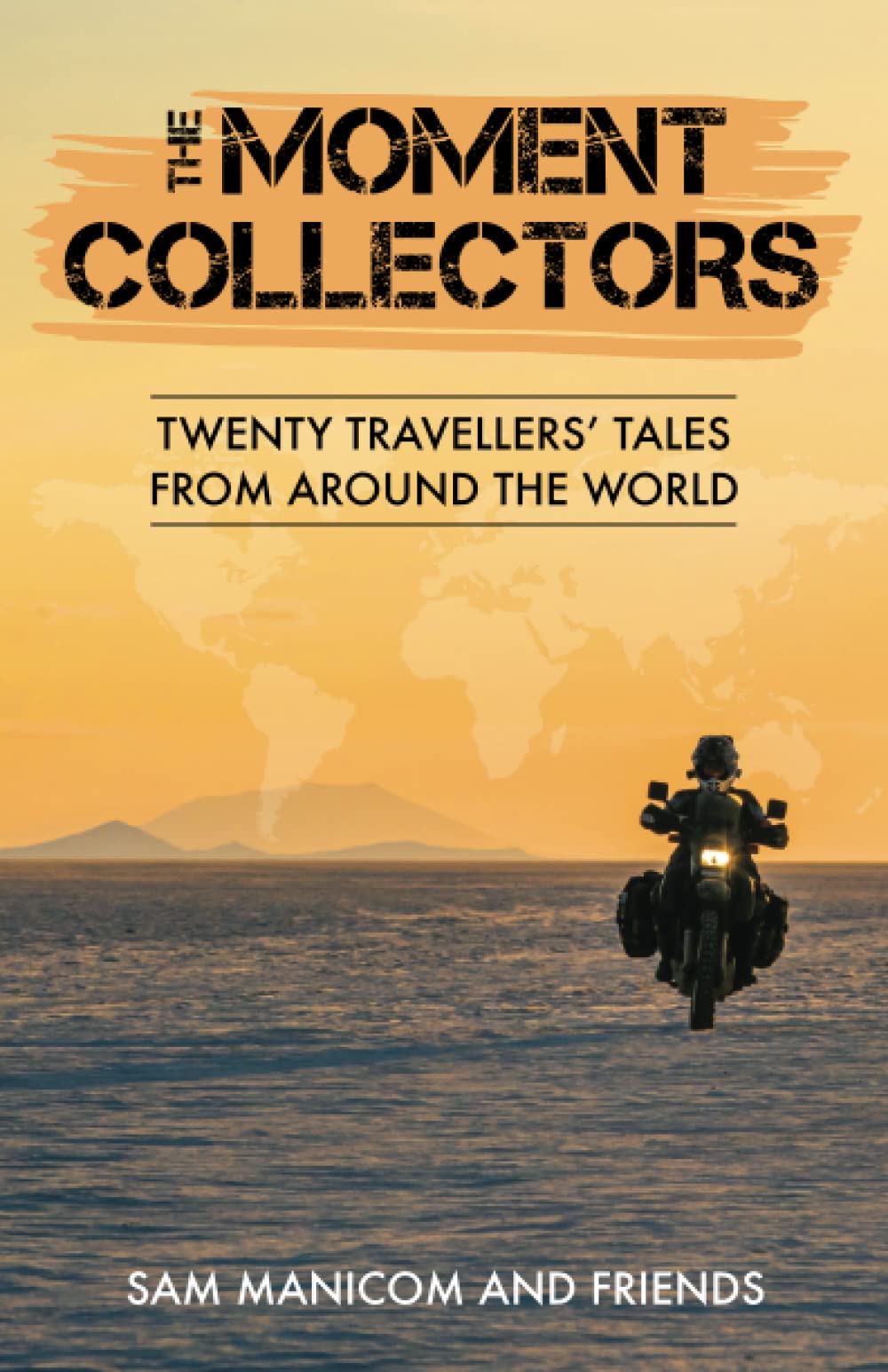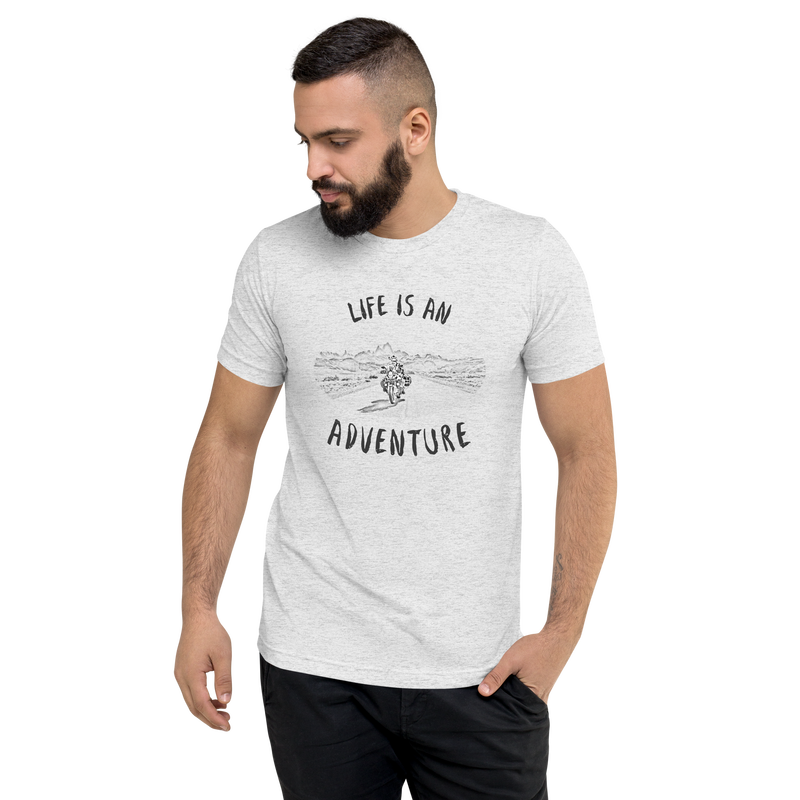By MarisaWe were on our way to Namibia's famous red dunes at Sossusvlei when we took a nasty spill and broke our motorcycle's monoshock (rear suspension), which if you're unfamiliar with bike mechanics, is something that you can't just fix on the side of the road. So we had to tow our bike up to Namibia's capital city of Windhoek (which was quite an adventure in itself) and are still waiting for a new monoshock to be flown in from Austria. While we're waiting, we decided to rent a car here in Namibia to explore this beautiful country. And what a trip it's been! It turns out that going by 4x4 is the way to see Namibia since most of the country's sights prohibit motorcycles to enter. This is due to a number of reasons (such as lions could chase you, a valid reason I suppose), so in order to see things, we would have had to either join a tour group or rent a car anyway. Even the place we were headed to when we had our accident, Sossusvlei, doesn't allow motorcycles in, it turns out. Maybe this broken monoshock was a blessing in disguise. We started in the capital city of Windhoek (said like VIND-hook, it's a German word since Namibia used to be a German colony), and our first destination was to conquer those wretched sand dunes that we had wanted to see when we first broke down: Sossusvlei. The name means “Dead-End Marsh", and if you look at an aerial image of Sossusvlei, you can see why. All along Namibia's Atlantic coast is an expanse of red sand dunes, and that is the Namib Desert. But then there is an area cutting into it where an ancient river once tried to push its way through the sand. That's Sossusvlei, and sometimes when it does rain, water still flows through that corridor, only to peter out at the end in a marshy pan of soaked sand. When it's not raining (most of the time as you can imagine), this area is a perfect peninsula of hard land sticking into the sea of sand, so you can drive into it and get up-close to the impressive dunes. And when I say impressive dunes, I mean some of the largest sand dunes on earth. Not only is the Namib desert the world's oldest desert, and the red rusty color of the sand makes for incredible pictures, but because of the cross-winds keeping the dunes stable, the sand takes on gorgeous shapes as it piles up to towering heights. Big Daddy is the name of the largest dune of Sossusvlei, and at 325 meters high (that's 1,066 feet!), climbing up this dune takes many strenuous hours. That was not something that really appealed to us, but we did climb a much smaller, yet still big sand dune with a much more boring name: Dune 40. The key is to get to the dunes early, right at sunrise when the sand is fiery red in the slanted sunlight but icy cool to the touch (by 10:00 AM it's scorching, so hot you can't climb the dune without wearing boots). While we climbed, one side of Dune 40 looked glittering and velvety smooth in the sun, while the other side was still obscured in shadow. After only about a half hour of trudging, we reached the top, and at the crest of it there was this perfect sweeping line where the bright desert sun met the darkness of night. It was stunning, and well worth the effort of getting up there. A Sea of Sand is the perfect description for the Namib desert, and you would think there'd be nothing else out here, but amazingly, we saw quite a bit of life amidst the dunes. Little lizards, beetles, and all types of birds had made their way to Sossusvlei, but what was most surprising was to see giant Oryx antelope hanging out. They're gorgeous: with two huge straight horns coming out of their skulls in a massive V, ridged to mark their age like the rings of a tree, and black and white paint on their faces like they're going out for the Day of the Dead. What they ate out there, I have no idea, but the Oryx (Gemsbok in Afrikaans) are particularly adapted to life in the desert, and in fact, they prefer it. Nearby to the dunes is a narrow canyon called Sesriem Canyon. Now that the sun was overhead, it was a nice respite from the desert heat down in the canyon, and made for a pleasant hike. After all the dust and dryness of Sossusvlei, we headed to the Atlantic coast to freshen up with some cool ocean breezes. We had rented a car from a local taxi company in Windhoek instead of a name brand rental agency because it was a good deal, but we definitely got what we paid for. The air conditioning was broken and would only blow on our feet, so we had to constantly keep the windows open so that we didn't roast alive in there. This made things dusty, very dusty. The road from Sossusvlei to Walvis Bay, although beautiful as it went over Kuiseb Pass, was not a good road. It was corrugated, rippled like a perfect washboard that jostled us around continuously for four hours straight. Blown out tires were strewn across the side of the road like it was a rubber graveyard. We passed several people with flats who were cranking their jacks and turning their lug wrenches. And we should have taken warning, because on one of those long desolate stretches, suddenly we could feel the car bottom out, and knew we had a flat. But this is normal for Namibia, and simply a part of life out here. Everyone gets flats, that's just the way the roads are. All vehicles come with full spares, many with two, and most car rentals insure you up to two flats because they know it's bound to happen. Since we'd gone cheap, we told our rental/cab company that we'd pay for all damages, and ended up dishing out a bit of money for this flat. But in the end we were lucky to only have one. We met a guy who had rented a 4x4 and was on his fifth new tire. At Walvis Bay, and all along the Namibian coast, the sand dunes meet the sea in a cloud of mist. You might think that sand and sea go together to make a perfect beach scene, and normally they do. But these massive Sahara-like sand dunes emptying into a frigid, almost antarctic Atlantic waters make for a very bizarre, foreboding scene. Here, a thick fog of clouds constantly hover over the shoreline, and the condensation it creates is the only source of water for any wildlife that dare to live here. North of Walvis Bay, we drove along this barren, dreary scene to what is known as the Skeleton Coast. This is because any sailors who had the misfortune of shipwrecking here were immediately doomed. If it was not the storms of the sea that killed them, they would be greeted by a wasteland of sand dunes once reaching land. Nowhere to go, nothing to drink, the skeletons of both men and shipwrecks can be found across the landscape. But then amidst all the desolation of the Skeleton Coast, suddenly we came to the Cape Cross Seal Reserve, and found ourselves immersed in a loud cacophony of wriggling creatures all chatting and arguing with each other, like a Venice Beach for seals. Visiting this Brown Fur Seal colony was perhaps one of my favorite things I've done on my travels. It was just so jarring and fascinating. The intoxicating odor of them all (and I mean that in the worst way possible, because they stank like fish rotting in a decaying corpse), and their strange noises, like Wookies and children and grunting bears all together, it made me feel like I had walked into that bar in the original Star Wars and was suddenly surrounded by alien species. Though it looked like some were trying to take a nap or quietly nurse their young, others were loudly complaining as they slopped their way around, pushing whoever was in their way, or completely walking over each other with flippers in faces. And still others were arguing, growling at each other and snapping like dogs. The wooden walkways at Cape Cross didn't go into the seal colony as much as the seal colony had taken over the walkways. You could see that there had once been an attempt at building a roofed picnic area there, but the seals now completely owned that space and there was no taking it back. I was definitely in their world now, and was very thankful for the wooden bars that barely separated us, because some of those seals were absolutely huge with a mouth full of bloody fangs. Fish carcasses and strewn-apart entrails were everywhere, and you could see that sometimes the blood on their mouths was not just from having dinner, but from attacking each other. After the seal colony, it took a few hours to get the putrid smell out of our noses as we headed inland, back to where the sun beat down on the rocks, and dust filled our car and clothes. That evening, as we camped in a town that hadn't seen rain in eight years (Uis), I realized that my hair smelled like it was burnt. Straw-like and crispy dry to the touch, both of us had hair that now appeared streaked in grey, though it was just dust and sand. Even a good shower didn't fix it. Our final adventure in Namibia with our rental car was going to be Etosha National Park, a safari paradise of lions, elephants, rhinos, and giraffes. That will all be for my next blog post, part two of our rental car excursion, but on our way there, we had another Namibian surprise in store for us: the Himba. The Himba people are an indigenous group of semi-nomadic Namibians who call the northern reaches their home. But what makes these people so iconic is the way the women cover their bodies with red ochre butter, and use this ochre mud to make long dreads in their hair. Decorated from head to toe in beads and hides, these bare-breasted women are a beautiful sight to behold. Unfortunately, their traditional way of life is disappearing. For the past eight years Namibia has been in a severe drought, which has forced many of the Himba to give up grazing their traditional lands. Now you can see them oftentimes camped along the side of the road, as they use money from tourists and the bartering of goods to support themselves. So as we made our way from Uis to Etosha, we saw a tiny village of mud huts along the road and a little market of trinkets set up, and decided to stop and pay for a tour. This was both fascinating and awkward. Our tour guide was a man from the village who spoke English (along with five other languages), and he took us around, showing us how the village was organized with a sacred fire in the central space, and how women dressed with cow or goat hide skirts and headdresses. We also got to see how the women used incense to “bathe", as they actually never take a bath, and simply reapply the ochre butter mixture on their skin every day, and then waft themselves with smoke. The children were adorable, but I felt uneasy about being presented with women as if they were a circus attraction, and the fact that they rarely smiled or looked happy about us being there made it worse. Plus, paying to take pictures of half-naked women just seemed like something I never thought I would find myself doing. They weren't all half-naked though. Some women dressed in what they called “Victorian" garb, which was their interpretation of the dresses European settlers had encouraged them to wear in the 1800's. But with very bright colors and really cool hats that were built to be supportive for carrying things on their heads, you could tell that they had taken the designs and made it their own. We were just about done with our tour and feeling satisfied with our glimpse into this new and different culture when the guide asked us to do him a favor, (and no, it wasn't for dirt on Joe Biden). We had told him where we were headed and he said, “There's a woman here with a month-old baby, and she wants to go to the Himba village outside Etosha Park. Could you bring her there?" We were shocked. Yes, we were going there, but that was three-and-a-half hours away, and this woman couldn't speak English, and she was covered in red mud and we were in a rental car, and she didn't have a shirt on... but hey, why not? And so this became the authentic Himba experience that I was looking for. Despite having little to no English, this woman was full of smiles and her baby was adorable (with a very very long name that I could not remember), and she smelled like a mixture of incense and body odor. But truth be told, she probably smelled better than me at that moment. And with some blankets put over the seats so that she didn't get red everywhere, we had an enjoyable time listening to the Namibian CD that was left in the car by the taxi company, and waving to the other Himba people that we passed. I just felt bad that our air-conditioning didn't work and the car was super dusty, but she was probably very used to heat and dust. When we arrived at Etosha, we dropped her off with her bags of ground corn flour and basket-weaving materials, and waved goodbye to our new friend. In the end, as much as we love traveling on our motorcycle, going to Sossusvlei, the Cape Cross Seal Reserve, and transporting a Himba woman to another village all would not have been possible on our bike. So I was becoming very thankful for our rental car, and the best was still to come: our self-drive safari in Etosha National Park! So stay tuned until next time! Bonus news! Tim is almost finished with his second book: Two-Up and Overloaded. It will cover our first year of travel from Chicago to Panama. If you haven't done so already, take a look at his first book Maiden Voyage to get to know the who, what, and why that inspired us to be on the trip we are currently on. |
Follow UsRide with us from Chicago to Panama!
2Up and Overloaded Get inspired by the tale that started it all:
Maiden Voyage 20 author's tales of exploring the world!
The Moment Collectors Help us get 40 miles further down the road with a gallon of gas!
Become a Patron for early access to our YouTube Videos!
Subscribe to our YouTube Channel!
Subscribe to our Blog by Email
|
2Up and Overloaded
Join our clan of like-minded adventurers...
Proudly powered by Weebly
Designed by Marisa Notier


